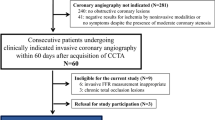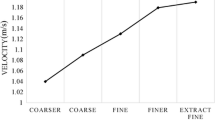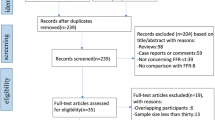Abstract
Computed tomography angiography (CCTA)-based calculations of fractional flow reserve (FFR) can improve the diagnostic performance of CCTA for physiologically significant stenosis but the computational resource requirements are high. This study aimed at establishing a simple and efficient algorithm for computing simulated FFR (S-FFR). A total of 107 patients who underwent CCTA and invasive FFR measurements were enrolled in the study. S-FFR was calculated using 145 evaluable coronary arteries with off-the-shelf softwares. FFR ≤ 0.80 was a reference threshold for diagnostic performance of diameter stenosis (DS) ≥ 50%, DS ≥ 70%, or S-FFR ≤ 0.80. FFR ≤ 0.80 was identified in 78 vessels (54%). In per-vessel analysis, S-FFR showed good correlation (r = 0.83) and agreement (mean difference = 0.02 ± 0.08) with FFR. The sensitivity, specificity, positive predictive value, negative predictive value, and accuracy of S-FFR ≤ 0.80 for FFR ≤ 0.80 were 84%, 92%, 92%, 83%, and 88%, respectively. S-FFR ≤ 0.80 showed much higher predictive performance for FFR ≤ 0.80 compared with DS ≥ 50% or DS ≥ 70% (c-statistics = 0.92 vs. 0.58 or 0.65, p < 0.001, all). The classification agreement between FFR and S-FFR was > 80% when the average of FFR and S-FFR was < 0.76 or > 0.86. Per-patient analysis showed consistent results. In this study, a simple and computationally efficient simulated FFR (S-FFR) algorithm is designed and tested using non-proprietary off-the-shelf software. This algorithm may expand the accessibility of clinical applications for non-invasive coronary physiology study.





Similar content being viewed by others
Abbreviations
- 3D:
-
3-Dimensional
- CAG:
-
Coronary angiography
- CFD:
-
Computational flow dynamics
- CCTA:
-
Coronary computed tomography angiography
- DS:
-
Diameter stenosis
- FFR:
-
Fractional flow reserve
- IDI:
-
Integrated discrimination improvement
- NPV:
-
Negative predictive value
- NRI:
-
Net reclassification improvement
- PPV:
-
Positive predictive value
- ROC:
-
Receive-operating characteristics
References
Ahn JM, Park DW, Shin ES et al (2017) Fractional flow reserve and cardiac events in coronary artery disease: data from a prospective IRIS-FFR registry (Interventional Cardiology Research Incooperation Society Fractional Flow Reserve). Circulation 135:2241–2251
De Bruyne B, Fearon WF, Pijls NH et al (2014) Fractional flow reserve-guided PCI for stable coronary artery disease. N Engl J Med 371:1208–1217
Johnson NP, Toth GG, Lai D et al (2014) Prognostic value of fractional flow reserve: linking physiologic severity to clinical outcomes. J Am Coll Cardiol 64:1641–1654
Min JK, Leipsic J, Pencina MJ et al (2012) Diagnostic accuracy of fractional flow reserve from anatomic CT angiography. JAMA 308:1237–1245
Cook CM, Petraco R, Shun-Shin MJ et al (2017) Diagnostic accuracy of computed tomography-derived fractional flow reserve: a systematic review. JAMA Cardiol 2:803–810
Trobs M, Achenbach S, Rother J et al (2016) Comparison of fractional flow reserve based on computational fluid dynamics modeling using coronary angiographic vessel morphology versus invasively measured fractional flow reserve. Am J Cardiol 117:29–35
Kim HY, Lim HS, Doh JH et al (2016) Physiological severity of coronary artery stenosis depends on the amount of myocardial mass subtended by the coronary artery. JACC Cardiovasc Interv 9:1548–1560
Kim HY, Doh JH, Lim HS et al (2017) Identification of coronary artery side branch supplying myocardial mass that may benefit from revascularization. JACC Cardiovasc Interv 10:571–581
West GB, Brown JH, Enquist BJ (1997) A general model for the origin of allometric scaling laws in biology. Science 276:122–126
Seiler C, Kirkeeide RL, Gould KL (1993) Measurement from arteriograms of regional myocardial bed size distal to any point in the coronary vascular tree for assessing anatomic area at risk. J Am Coll Cardiol 21:783–797
Huo Y, Kassab GS (2012) Intraspecific scaling laws of vascular trees. J R Soc Interface 9:190–200
Choy JS, Kassab GS (2008) Scaling of myocardial mass to flow and morphometry of coronary arteries. J Appl Physiol 104:1281–1286
Duncker DJ, Bache RJ (2008) Regulation of coronary blood flow during exercise. Physiol Rev 88:1009–1086
Petraco R, Escaned J, Sen S et al (2013) Classification performance of instantaneous wave-free ratio (iFR) and fractional flow reserve in a clinical population of intermediate coronary stenoses: results of the ADVISE registry. EuroIntervention 9:91–101
Koo BK, Erglis A, Doh JH et al (2011) Diagnosis of ischemia-causing coronary stenoses by noninvasive fractional flow reserve computed from coronary computed tomographic angiograms. Results from the prospective multicenter DISCOVER-FLOW (diagnosis of ischemia-causing stenoses obtained via noninvasive fractional flow reserve) study. J Am Coll Cardiol 58:1989–1997
Kruk M, Wardziak L, Mintz GS et al (2014) Accuracy of coronary computed tomography angiography vs intravascular ultrasound for evaluation of vessel area. J Cardiovasc Comput Tomogr 8:141–148
Tu S, Barbato E, Koszegi Z et al (2014) Fractional flow reserve calculation from 3-dimensional quantitative coronary angiography and TIMI frame count: a fast computer model to quantify the functional significance of moderately obstructed coronary arteries. JACC Cardiovasc Interv 7:768–777
Taylor CA, Fonte TA, Min JK (2013) Computational fluid dynamics applied to cardiac computed tomography for noninvasive quantification of fractional flow reserve: scientific basis. J Am Coll Cardiol 61:2233–2241
Cho SG, Park KS, Kim J et al (2017) Coronary flow reserve and relative flow reserve measured by N-13 ammonia PET for characterization of coronary artery disease. Ann Nucl Med 31:144–152
Johnson NP, Kirkeeide RL, Gould KL (2012) Is discordance of coronary flow reserve and fractional flow reserve due to methodology or clinically relevant coronary pathophysiology? JACC Cardiovasc Imaging 5:193–202
Hwang D, Jeon KH, Lee JM et al (2017) Diagnostic performance of resting and hyperemic invasive physiological indices to define myocardial ischemia: validation With 13N-ammonia positron emission tomography. JACC Cardiovasc Interv 10:751–760
Wu W, Pan DR, Foin N et al (2016) Noninvasive fractional flow reserve derived from coronary computed tomography angiography for identification of ischemic lesions: a systematic review and meta-analysis. Sci Rep 6:29409
Johnson NP, Kirkeeide RL, Gould KL (2013) Coronary anatomy to predict physiology: fundamental limits. Circ Cardiovasc Imaging 6:817–832
Gaur S, Taylor CA, Jensen JM et al (2016) FFR derived from coronary CT angiography in Nonculprit lesions of patients with recent STEMI. JACC Cardiovasc Imaging 10(4):424–433
Morris PD, Narracott A, von Tengg-Kobligk H et al (2016) Computational fluid dynamics modelling in cardiovascular medicine. Heart 102:18–28
Acknowledgements
We thank Seon A Jeong and So Hyeon Park for their excellent and devoted contributions.
Funding
This study was funded by This study was supported by Korean Society of Circulation Grant (201301-01), Korean Society of Interventional Cardiology Grant [2014-1], Samsung Biomedical Research Institute Grant [GL1B33211], Samsung Medical Center Heart Vascular and Stroke Institute Clinical Research Project (OTC1601861), and National Research Foundation of Korea (2017R1A2B3010918).
Author information
Authors and Affiliations
Corresponding authors
Ethics declarations
Conflict of interest
The authors declare that they have no conflict of interest.
Ethical approval
All procedures performed in studies involving human participants were in accordance with the ethical standards of the institutional and/or national research committee and with the 1964 Helsinki declaration and its later amendments or comparable ethical standards.
Informed consent
Samsung Medical Center institutional review board approved this study investigating anonymized image and physiological data and informed consent was waived.
Rights and permissions
About this article
Cite this article
Han, H., Bae, Y.G., Hwang, S.T. et al. Computationally simulated fractional flow reserve from coronary computed tomography angiography based on fractional myocardial mass. Int J Cardiovasc Imaging 35, 185–193 (2019). https://doi.org/10.1007/s10554-018-1432-z
Received:
Accepted:
Published:
Issue Date:
DOI: https://doi.org/10.1007/s10554-018-1432-z




